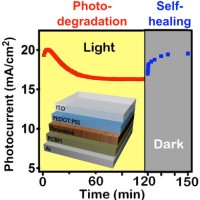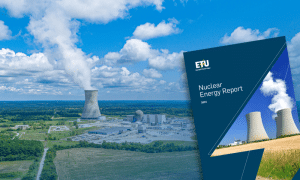With potential power conversion efficiencies of over 25 percent, perovskite solar cells are one of the more promising technologies under the microscope of global research.
However, there is a slight problem – expose them to sunlight for too long and they stop working.
While most photoactive elements used in the manufacture of solar devices – including silicon – are relatively unstable, methods such as vacuum sealing and chemical conversion can ensure energy output from a solar panel lasts for years rather than days.
Perovskite’s tendency to breakdown under solar radiation, even under vacuum sealed conditions, has hampered its road to commercialisation.
But in a breakthrough study, a team of researchers from the USA’s Los Alamos National Laboratory have discovered that solar-degraded perovskite solar cells can fully rejuvenate given time in the dark.
“What we found in this study is that under constant 1-sun illumination the large-grain perovskite solar cells degrade majorly in terms of the photocurrent,” said lead researcher Wanyi Nie.
“But what’s interesting is that the devices can self-heal when sitting in the dark for a short while.”
The researchers, from the Los Alamos “Light to Energy” team in the Material Synthesis and Integrated Devices group, were focused on developing organometallic thin-film semiconducting perovskite solar cells, a highly promising device with power conversion efficiencies (PCE) above 20 percent.
Despite its ease of manufacture and impressive PCE numbers, the team quickly realised an “actual market-viable photovoltaic technology requires the device to operate with stability under continuous sunlight.”
When the group took a deeper look at the atomic workings of the hybrid cell, they found that contrary to conventional thinking, the perovskite was not “degrading” in the sun due to intrinsic defects at all. Instead, deep within the lattice-like structure of the material, tiny electric charges were building up and becoming trapped, thus reducing the overall photo-efficiency of the entire device.
Placing the cell in dark for several minutes, or lowering the temperature by a few degrees, allowed for the “evacuation” of these trapped charges and returned the cell to full efficiency.
Further investigation found these trapped charges were likely the creation of small polaronic states within the subatomic perovskite lattice caused by the flow of ions through the material – a process called organic cation.
The team said the study will provide global researchers with an insight into the photo-stability issue in perovskite devices, and more study is underway toward improvements and the long term technological viability of perovskite-based photovoltaics.
“Our understanding of the organic cation is still primitive, but our work demonstrates its utmost importance in the photo-stability of perovskite devices and calls for further investigations in the future,” said study co-author Jean-Christophe Blancon.
The Los Alamos paper, “Light-activated photocurrent degradation and self-healing in perovskite solar cells”, was published in the journal Nature Communications.

















































